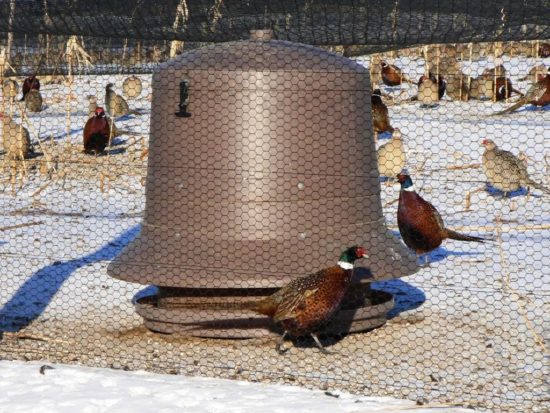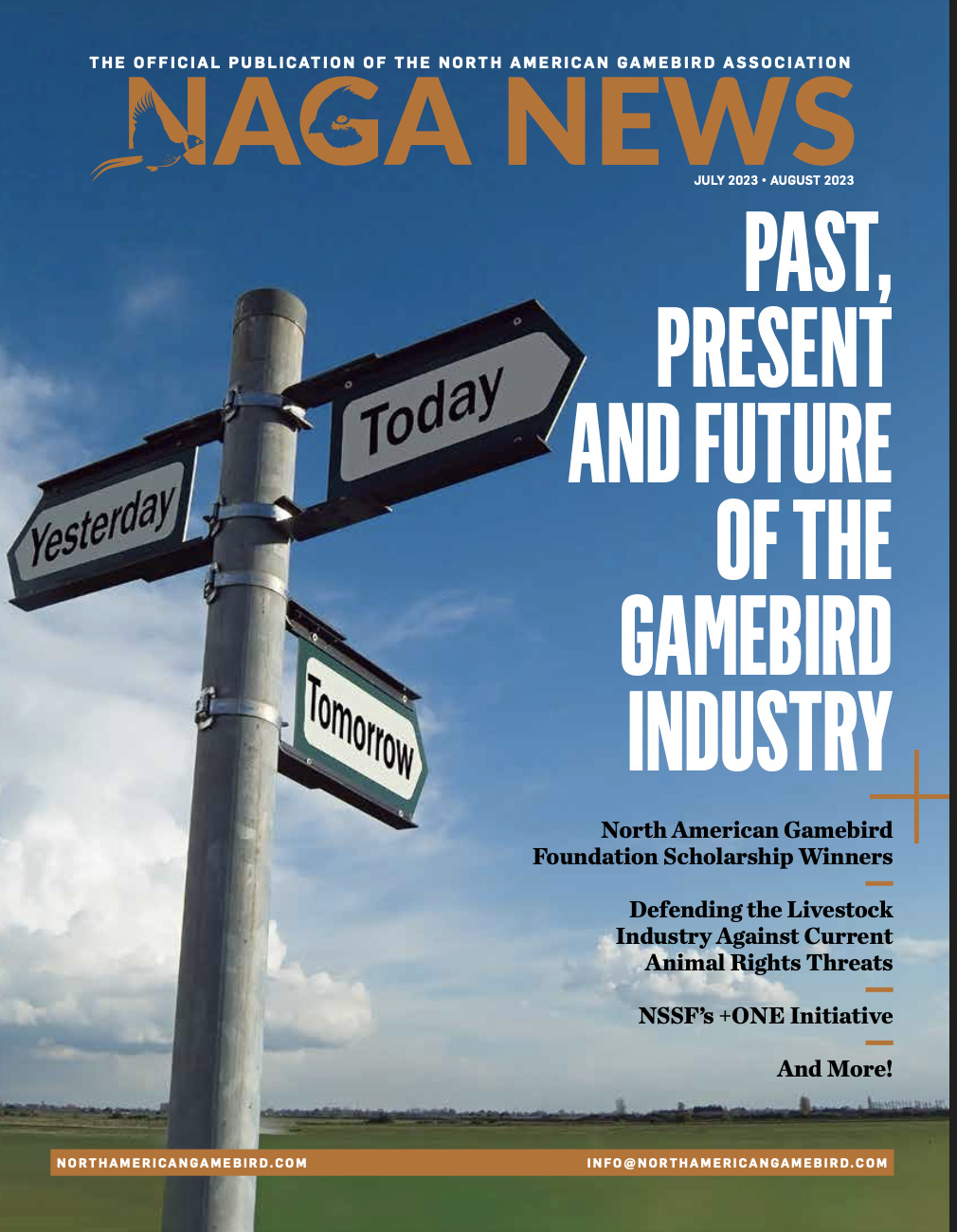In 2015, quick action by the North American Gamebird Association in response to outbreaks of the avian flu helped keep game birds supplied to hunting preserves all over the country. While that work continues, another serious threat emerged this year that required quick action.
And once again, NAGA met the challenge.
Earlier this year, NAGA became aware of new federal rules that would threaten the health of gamebirds and the viability of gamebird producers and the hunting preserves they supply. The rules would have severely restricted or eliminated the ability of gamebird producers to medicate their birds, either in the feed or in the water. Gamebird farms have been accustomed to obtaining these drugs over the counter, but the new rules would have put a stop to that.
NAGA president Fuzzy Stock wrote about these concerns in the November issue of NAGA News. Behind the scenes, NAGA Health Committee Chairman Bill MacFarlane began working to educate people with the Federal Drug Administration about the terrible impact the new rules would have on the gamebird business. The new rules would have greatly endangered the supply of gamebirds in the US, along with the businesses that depend on healthy quality birds. The behind the scenes efforts to prevent the new rules paid off this past week.
NAGA has been working with the FDA-CVM (Center for Veterinary Medicine) to formulate amended policy that would allow gamebird producers to still use medications (approved for major species) in their birds’ feed and water. These “amended policies” were published this week.
Dr. Meg Oeller from the CVM will be a speaker at the NAGA convention, January 23-25 in Gulfport, Mississippi. She will provide much more background and detail on how the amended policy will work. Even better, attendees at the NAGA convention will be able to ask questions after her presentation. This is yet one more important reason to make the trip to the convention. With the most affordable hotel rates in many many years, this is the year to attend. More information on the convention can be found HERE.
Dr. Oeller’s remarks will be related to how the farmer can get access to certain medications that have previously been available as “over-the-counter drugs.” Under the amended policy, farmers can still get access to these drugs. However, some medications used in the birds’ water will become available only by prescription from the veterinarian. The prescription will be presented to the pharmacy or distributor of the medication. Some medications used in the birds’ feed will be available only by Veterinary Feed Directive (VFD) from your veterinarian to be presented to the feed mill or distributor of the medicated feed.
Water: Drugs that will need a prescription for use in water are:
•Apramycin
•Gentamicin
•Neomycin
•Spectinomycin
•Streptomycin
•Erythromycin
•Tylosin
•Penicillin
•Oxytetracycline
•Chlortetracycline
•Sulfachloropyrazine
•Sulfachlorpyridazine
•Sulfadimethoxine
•Sulfamerazine
•Sulfamethazine
•Lincomycin
•Carbomycin
•Tetracycline
•Sulfaquinoxaline
Feed: Feeds will need a VFD for use of these drugs:
•Apramycin
•Hygromycin B
•Neomycin
•Streptomycin
•Ormetoprim
•Lincomycin
•Oleandomycin
•Erythromycin
•Tylosin
•Penicillin
•Virginiamycin
•Sulfadimethoxine
•Sulfamerazine
•Sulfamethazine
•Sulfaquinoxaline
•Chlortetracycline
•Oxytetracycline
Note: avilamycin, florfenicol, tilmicosin, and tylvalosin are already VFD drugs.
The new process is clear for drugs approved in gamebirds. Extra-label use is a bit more complicated. Extra-label use refers to drugs that are used in gamebirds that are approved for other species. Under the amended policy this is legal for water medications, following a veterinarian’s order. Extra-label use is not legal for medicated feeds.
However, the FDA “will not recommend or initiate enforcement action” for such use in minor species (including gamebirds), provided certain considerations are met. This will now include VFD feeds. You, your veterinarian, and your feed mill should consult Compliance Policy Guide (CPG) 615.115 and should abide by its considerations to use these feeds for your birds.
See: http://www.fda.gov/AnimalVeterinary/NewsEvents/CVMUpdates/ucm529164.htm for more information.
Get the full scoop and be able to ask the important questions by attending the NAGA convention and hearing Dr. Oeller’s presentation.
Special thanks to her, and to Bill for their work on our behalf.


